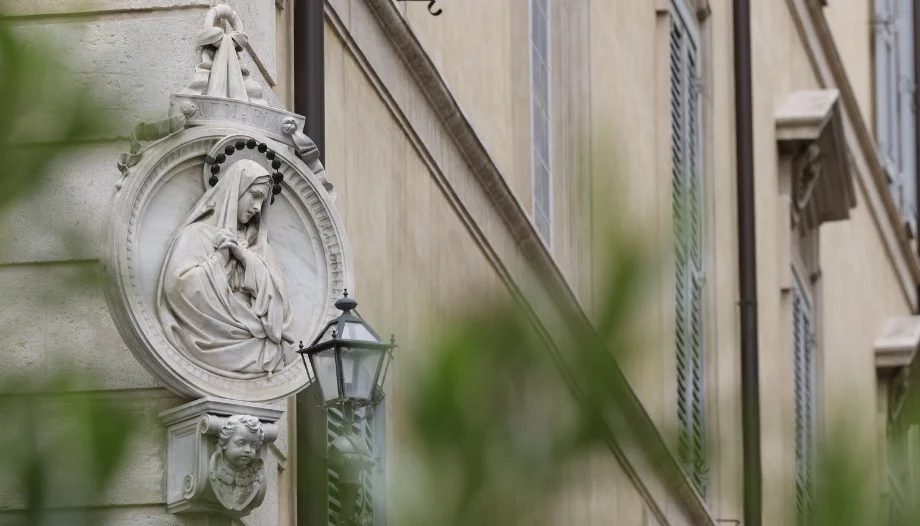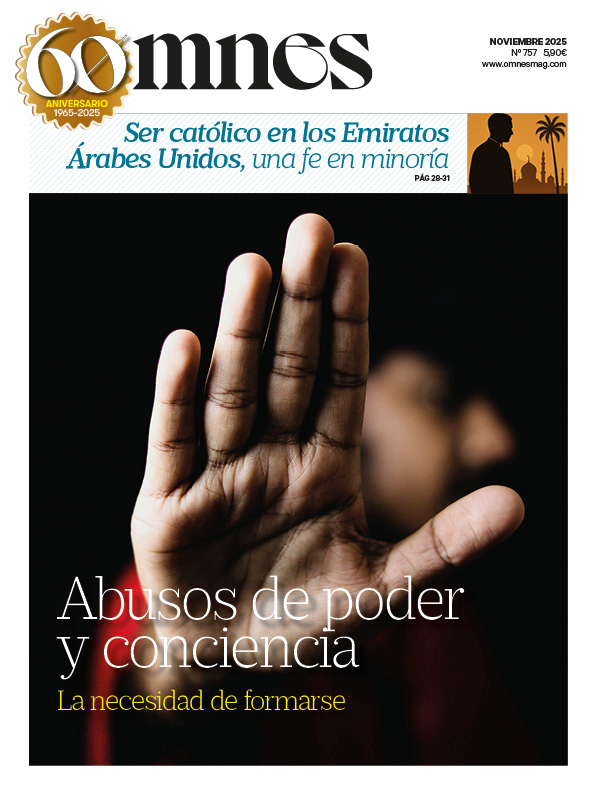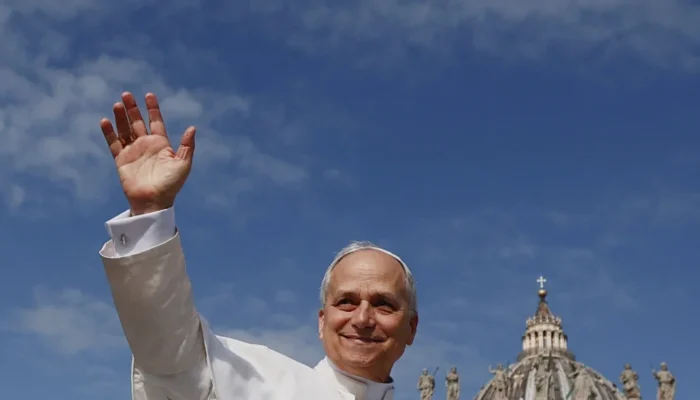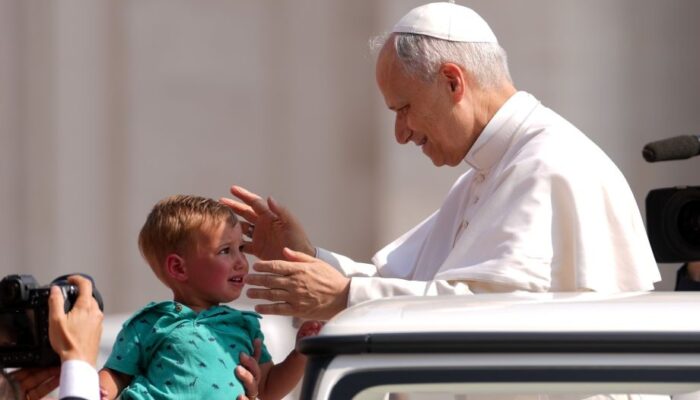There are expressions that summarize a centuries-old intuition of the Christian heart. One of them - ancient and fruitful - affirms: "De Maria numquam satis": of Mary, one can never say enough. It is not a pious slogan. It is a spiritual and theological golden rule: the deeper we go into the mystery of the Mother of the Lord, the wider the horizon of the Gospel widens, because Mary does not stand between Christ and us; she leads us to Him. Her name is not an obstacle, but a door; she does not compete with the Son, she points to him; she does not eclipse the Church, she remakes her in her purest form.
1. Mary in the economy of the Incarnate Word
The faith of the Church confesses Mary Theotokos, Mother of God, not to exaggerate her greatness, but to protect the truth of Jesus Christ: true God and true man. We learned this in Ephesus (431), when the Fathers, moved by the faith of the simple, proclaimed with force what was already lived in the liturgy: "He who was born of Mary is the eternal Word made flesh". If Christ were not a single divine person, Mary would not be the Mother of God; and if Mary were not the Mother of God, Christ would not be Emmanuel. In her name Christology is guarded.
St. Irenaeus (2nd c.) saw it with an eagle's eye: just as the knot of Eve's disobedience was untied by Mary's obedience, "what the virgin Eve tied with unbelief, the Virgin Mary untied with faith". In Mary, God recapitulates human history from the beginning: one woman, one word, one yes. What was crooked is straightened out in the simplicity of Nazareth.
2. The obedience that makes the world fertile
"Let it be done to me according to your word" (Lk 1:38). It is not resignation, it is freedom in its highest state: the freedom that is entrusted. St. Ambrose taught the virgins of Milan that in Mary virginity is not sterile: it is spousal, fully fruitful by the Spirit. In her humanity offers to God the cleanest part of itself, and God responds by giving her his own fruit. It is not by chance that St. Augustine, so zealous for the initiative of grace, emphasized that Mary conceived first in faith and then in the womb: fides concepit, fides peperit. That is why her "yes" was not only an emotional moment; it was a way of life. Mary is the "yes" made flesh.
3. The New Eve and the Ark of Presence
Scripture traces in fine ink what tradition will read in the paschal light. The Daughter of Zion welcomes the Holy One of Israel; the Ark of the Covenant, which David receives with trembling, reappears in the visitation: the Word comes to the house of Zechariah and John leaps in Elizabeth's womb as David danced before the Ark (cf. 2 Sam 6; Lk 1). The mountains tremble, the Spirit covers with its shadow, and the blessing is poured out in the form of a Magnificat. St. Ephrem, the Harp of the Spirit, likes bold images: the Infinite is carried by the arms of an adolescent girl; the Fire rests without burning; the bush burns and is not consumed. None of this is literature: it is dogmatic in poetry.
4. Virgin, Mother, Wife
The three names run through the liturgy like a litany of identity. Virgin: not out of rejection, but out of total availability to God. Mother: not only of Christ, but of the living (cf. Jn 19:26-27), because Mary's motherhood is enlarged at the hour of the Cross when the Son gives her as an inheritance to the nascent Church. Bride: icon of the Church, the first believer, perfect image of what the Bride is called to be for the Bridegroom. St. John Damascene - theologian of beauty - will contemplate in her Dormition the passage of the one who brought Life to full life, "the Virgin who, being heaven, made room for the Uncontainable".
5. Immaculate Conception and Assumption: transparency of grace
When the Church, centuries later, proclaims the Immaculate Conception (1854) and the Assumption (1950), she does not add late embellishments to a sentimental devotion. It recognizes, with surgeon's precision, two truths that spring from the heart of the Redemption. The Immaculate Conception is not a capricious "exception", but the fulfillment in advance of the destiny of the Church: everything is grace and grace can - and wants to - conquer from the very first moment. The Assumption, for its part, does not take Mary's foot off the ground; it gives it back to us in heaven. In her we see the fulfillment of the promise: the flesh, when it is taken by God, does not hinder, it sings.
6. Mary, teacher of theology
It may seem paradoxical, but theology learns from Mary the essentials of the method: listening, pondering, guarding, obeying. Luke reveals that "Mary kept all these things, pondering them in her heart" (Lk 2:19). Theology that does not meditate - that does not pray - ends up being a game of mirrors. Mary teaches a thought that kneels down without renouncing rigor; that discerns without mutilating the mystery; that confesses without anxiety of control. The Fathers prayed by thinking and thought by praying: that is why their treatises smell of incense. One does not enter this school by academic opposition, but by conversion.
7. Why is it "never enough" to talk about Mary?
Because to speak of Mary is to speak of the way in which God saves. God does not enter history with an imperial roar, but by begging for a yes. He exposes himself to the freedom of a creature - and through that beloved risk - he inaugurates salvation. When the Church contemplates Mary, she learns her own form: she does not impose herself, she proposes; she does not conquer, she engenders; she does not celebrate herself, she magnifies the Lord. De Maria numquam satis means that we will never exhaust the praise of God's work in a woman, and that in her littleness God has become close to us.
8. Mary in the life of the disciple
Many reduce Marian devotion to a set of acts, valuable but peripheral. Tradition, however, places it at the heart of discipleship. The Rosary, the Gospel prayer par excellence, is not a talisman of emergencies, but a school of vision: by the hand of the Mother, the mysteries of Christ traverse the day and shape it. Marian memory protects us from two temptations: that of a disincarnated Christianity (which disdains bodies, rhythms, history), and that of a soulless activism (which confuses productivity with fecundity). Mary keeps the times: the kairos of God and the chronos of our obligations; that is why Marian piety, well lived, does not take away hours, it rescues them.
9. Maternal mediation: Christ and the Church, not "Christ or the Church.
From the first centuries, the Christian people have experienced the intercession of the Mother. To call her "advocate" or "helper" takes nothing away from the unique mediation of Christ (cf. 1 Tim 2:5); it puts her into action in the key of communion. All mediation in the Church is a participation in the one mediation of the Lord. Mary does not add another "line of salvation", but exercises maternity in the Mystical Body: where the Son is Head, the Mother accompanies his members. The Fathers intuited it, the saints lived it, the Magisterium explained it with sobriety. Those who fear that loving Mary will displace Christ have not yet tasted the good wine of Cana: "Do whatever he tells you" (Jn 2:5). That is his perpetual watchword.
10. A spirituality of gratitude
Gratitude is the memory of the heart. Mary sings it in the Magnificat: she does not look at herself, she looks at the fidelity of God. This is why true Marian devotion is not nourished by passing emotions, but by concrete gratitude: gratitude for the faith we have received, for the gentle corrections of Providence, for God's patience with our inconsistencies. On clear days, gratitude sustains humility; on dark days, it sustains hope. "From now on all generations will praise me" (Lk 1:48): this is not vanity, it is prophecy. To bless Mary is to learn to bless history: even when deadlines, silences and crosses are painful.
11. For a time that needs a mother
We live under a sophisticated orphanhood: hyperconnected, but alone; informed, but disoriented; sensitive, but fragile. In these landscapes, Mary's motherhood is not a devotional ornament, it is the medicine of reality. She teaches us to welcome life, to guard it, to let it go when it is time. She teaches to obey without servility and to resist without hatred. Those who receive her in their homes - like John at the foot of the Cross - experience that the Church is not a spiritual NGO, but a family: with a table, with traditions, with memory, with mission.
12. Learning to say "yes
De Maria numquam satis. What we say about her will never be enough because we will never exhaust what God has done in her. Her greatness does not drive us away; it encourages us: if grace could do such great marvels in a creature, what will it not be able to do in us if we stop negotiating with God and begin to respond as children?
Holy Mary, Mother of God and our Mother, teach us to believe, to hope and to love. And when we lack strength, repeat in our ears the motto that defines you: "Do whatever he tells you. Only in this way - with your hand on ours - will we understand that, from you, Mother, numquam satis. It will never be enough.








